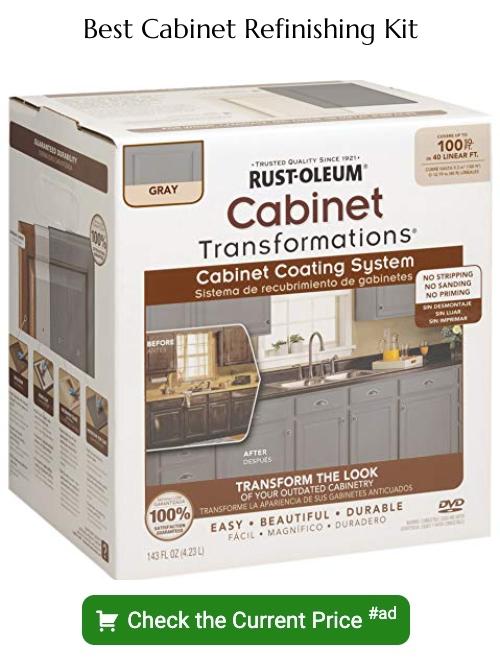Last updated on
Discover the cost-effective solution between painting and replacing your kitchen cabinets, as we delve into the benefits and drawbacks of each option.
Are you tired of looking at your outdated kitchen cabinets? Do you dream of a fresh, modern look but worry about the cost? You’re not alone. Many homeowners face the dilemma of whether to paint or replace their kitchen cabinets.
While both options can give your kitchen a much-needed facelift, one is significantly cheaper than the other. In this article, we’ll explore whether it’s cheaper to paint or replace your kitchen cabinets and help you make an informed decision that fits within your budget.
So, let’s get started!
What's Inside
Assessing Kitchen Cabinet Condition
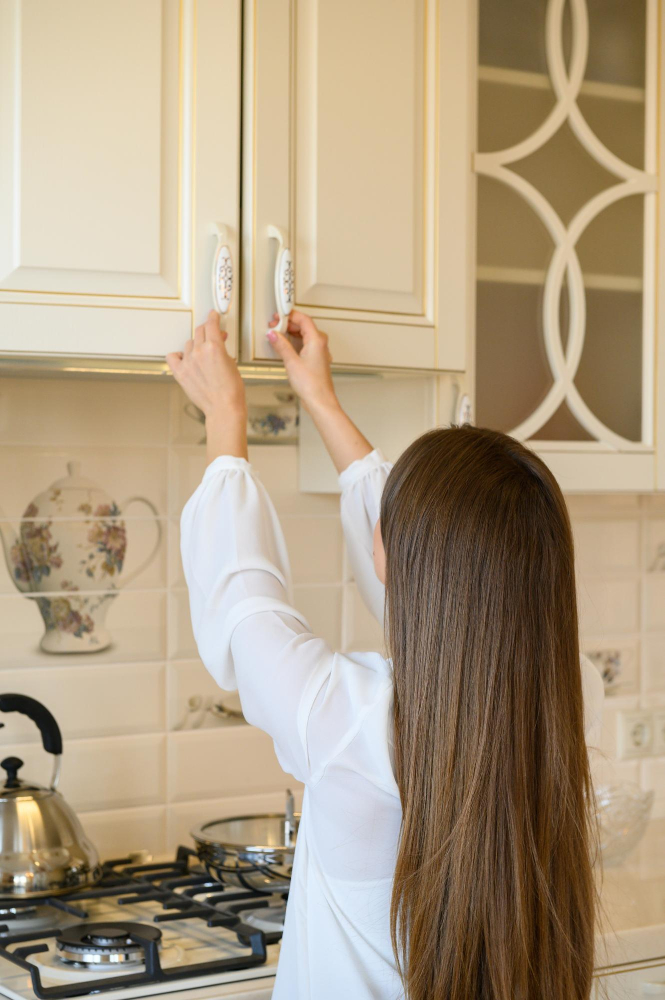
Before deciding whether to paint or replace your kitchen cabinets, it’s essential to assess their condition. If the cabinets are structurally sound and in good shape, painting them may be a viable option.
However, if they’re damaged or worn out beyond repair, replacing them might be the best solution.
Start by examining each cabinet carefully for signs of wear and tear such as scratches, dents or water damage. Check that all doors open and close smoothly without any sticking points.
Look inside each cabinet for signs of mold growth or warping due to moisture exposure.
If you find minor cosmetic issues like scratches on the surface but no structural damage underneath then painting is an excellent way to give your kitchen a fresh look without breaking the bank.
On the other hand, if you notice significant structural problems such as sagging shelves or broken hinges that cannot be repaired easily with some DIY work then replacement may be necessary.
Factors Affecting Cabinet Decision

One of the most significant considerations is the condition of your current cabinets. If they are in good shape and structurally sound, painting them may be a more cost-effective option than replacing them entirely.
Another factor that affects this decision is budget. Replacing all of your kitchen cabinets can be an expensive undertaking, especially if you opt for high-end materials like solid wood or custom designs.
On the other hand, painting existing cabinetry can give you a fresh look at a fraction of the cost.
Time investment is another crucial consideration when choosing between these two options. Painting requires less time than replacing since it doesn’t involve removing old cabinetry and installing new ones from scratch.
Skill level required for each option also plays an important role in making this decision; while anyone with basic DIY skills can paint their own cabinets with some guidance and patience, cabinet replacement typically requires professional installation services due to its complexity.
Cost Comparison: Painting Vs. Replacing

Generally speaking, painting your cabinets will be significantly cheaper than replacing them entirely. The average cost of painting kitchen cabinets ranges from $1,200-$7,000 depending on the size of your kitchen and quality of materials used.
In contrast, replacing all cabinetry can range anywhere from $5k-$50k or more.
However, keep in mind that there are additional costs associated with both options beyond just material expenses. For example: if you choose to paint your existing cabinets yourself rather than hiring a professional painter; you’ll need to purchase tools like sandpaper and brushes which can add up quickly.
Time Investment: Painting Vs. Replacing
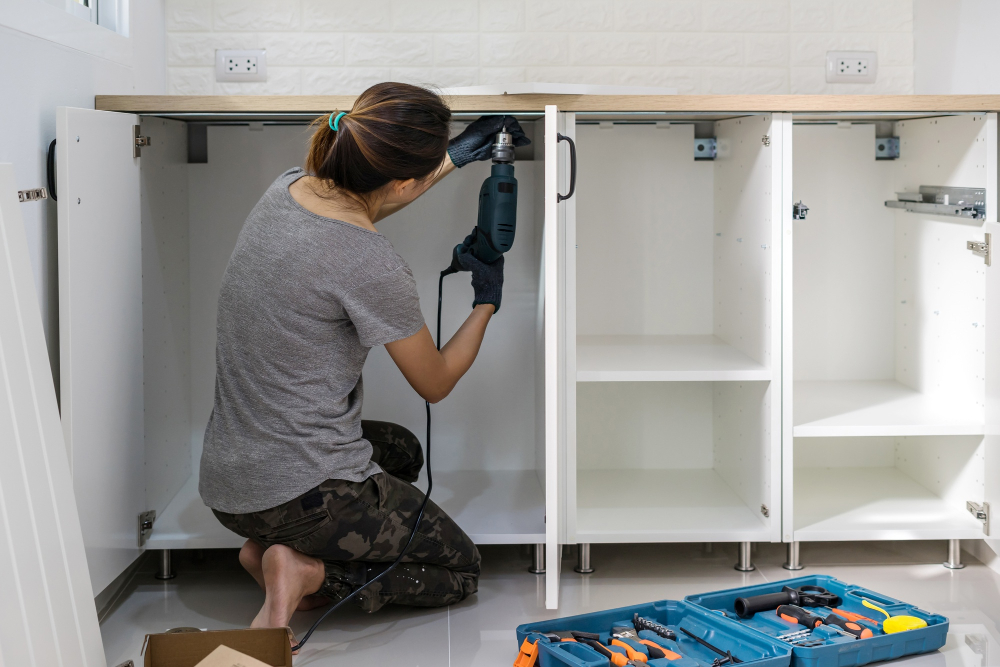
Painting cabinets can be a time-consuming process that requires patience and attention to detail. Depending on the size of your kitchen, painting cabinets can take anywhere from several days to several weeks.
You’ll need to set aside time for prep work such as cleaning, sanding, priming before even starting with the actual painting process.
On the other hand, replacing cabinets may seem like an easier option since you don’t have any prep work or paint drying times involved. However, this option also requires significant investment in terms of time spent researching cabinet styles and materials that fit within your budget.
Ultimately both options require some level of commitment when it comes down to investing time into them; however if you are looking for quick results then replacing might be more suitable than painting which takes longer due its multi-step nature.
Skill Level Required for Each Option
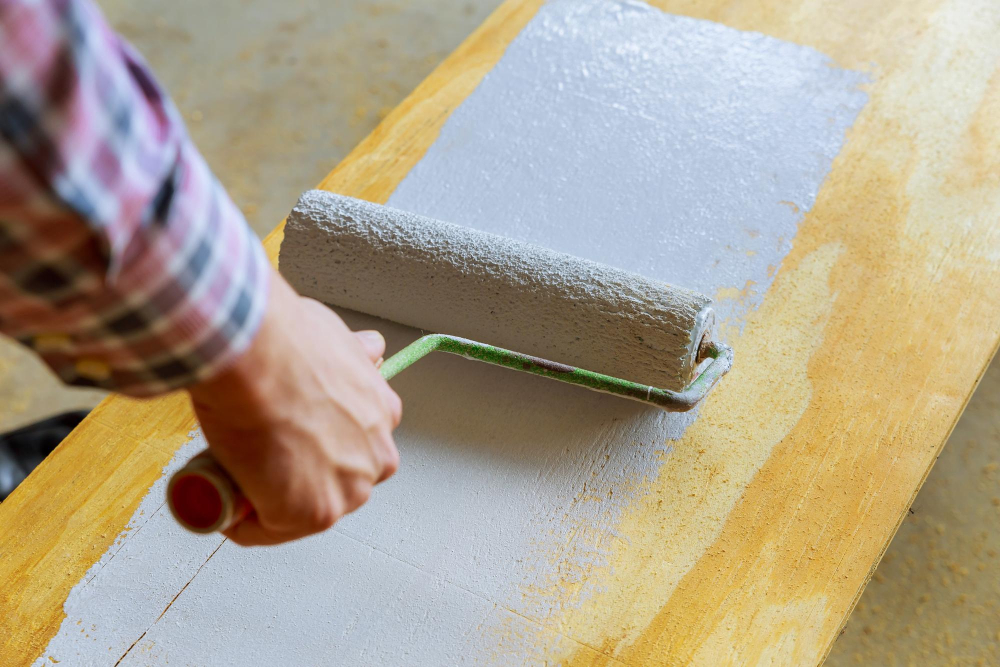
Painting cabinets may seem like a simple task, but it requires some level of expertise and experience. If you’re not confident in your ability to paint the cabinets yourself, hiring a professional painter is recommended.
On the other hand, replacing kitchen cabinets requires more technical skills such as measuring and cutting accurately. It also involves plumbing and electrical work if you plan on changing the layout of your kitchen entirely.
If you have no prior experience with home improvement projects or lack confidence in your DIY abilities, then hiring professionals for either option might be best for you. However, if you’re willing to learn new skills through online tutorials or classes at local hardware stores – painting could be an excellent opportunity for beginners who want a quick update without breaking their budget.
Pros and Cons of Painting Cabinets

Here are some pros and cons to consider before deciding whether painting your cabinets is right for you.
Pros:
- Cost-effective: Painting your existing cabinets can be significantly cheaper than replacing them entirely.
- Quick turnaround time: Depending on the size of your kitchen, painting can typically be completed within a few days.
- DIY-friendly: With proper preparation, painting kitchen cabinets can be done by most homeowners with basic DIY skills.
- Customizable colors and finishes: You have complete control over the color and finish of your painted cabinets.
Cons:
- Limited durability: Painted surfaces are more prone to chipping, peeling or fading over time compared to other cabinet finishes like wood stain or laminate.
- Time-consuming prep work required: Properly preparing surfaces before applying paint requires significant effort in cleaning, sanding down old paint layers etc
- Professional results may require professional help: Achieving an even coat that looks professionally done may require hiring professionals which adds up cost-wise
- Not suitable for all types of cabinetry materials: Some materials such as thermofoil do not take well with paints
Choosing the Right Paint for Cabinets
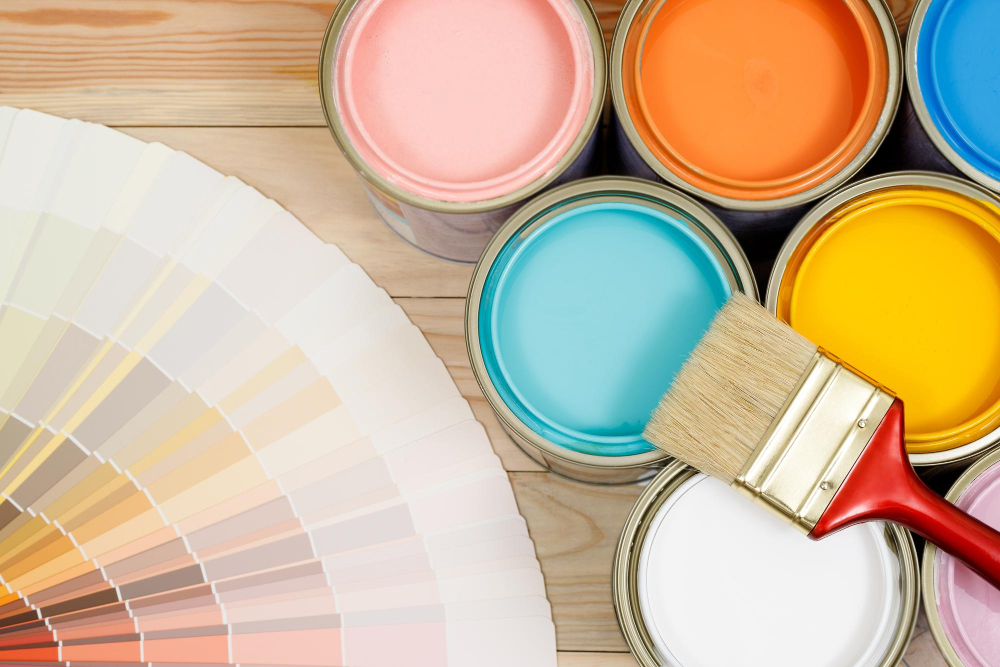
Not all paints are created equal, and using the wrong type of paint can lead to a less-than-desirable outcome.
Firstly, you’ll want to choose a high-quality paint that’s specifically designed for cabinets or furniture. These types of paints are more durable and have better adhesion than standard wall paints.
Next, consider whether you want an oil-based or water-based formula. Oil-based paints provide a smoother finish but take longer to dry and require solvents for cleanup.
Water-based formulas dry faster but may not be as smooth as oil-based ones.
Another important factor is color selection – lighter colors tend to show dirt less easily while darker colors can make your kitchen feel smaller if it lacks natural light.
Lastly, don’t forget about sheen level – higher gloss finishes will reflect more light making them easier cleanable but also highlight imperfections in surfaces whereas matte finishes hide flaws well but aren’t very easy-to-clean.
Process of Painting Cabinets
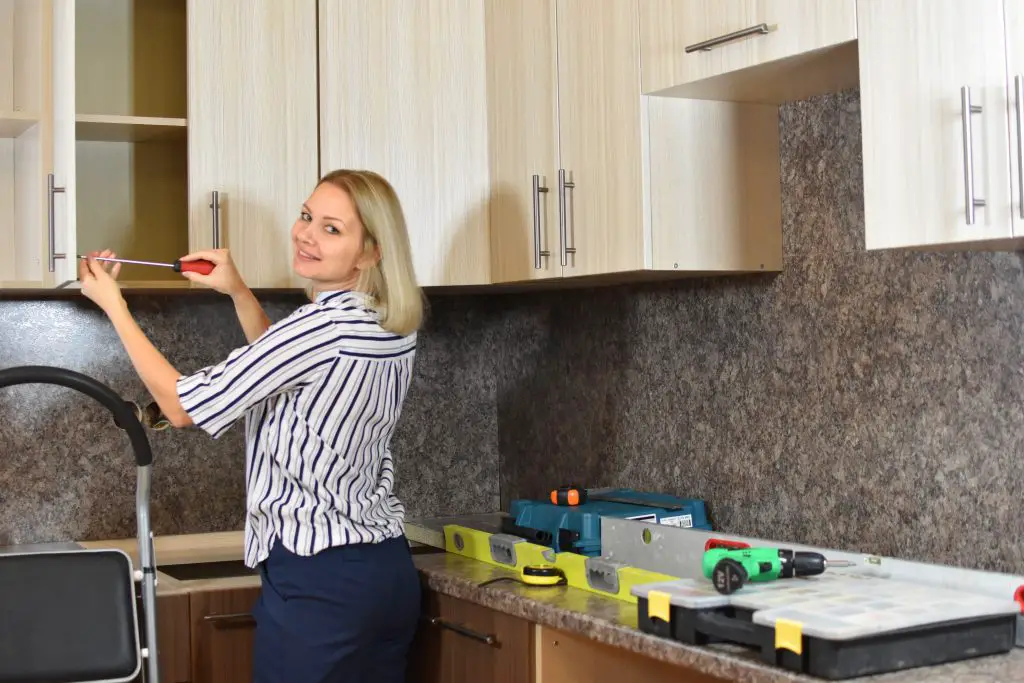
First, remove all cabinet doors and hardware. Clean them thoroughly with a degreaser and sandpaper any rough spots or imperfections in the wood.
Next, apply a primer coat using a brush or roller and let it dry completely before applying two coats of paint in your desired color.
When painting cabinets, it’s crucial to use high-quality materials such as brushes designed for smooth finishes and durable paints that can withstand daily wear-and-tear. Be sure to allow ample time for each coat of paint to dry before moving on to the next step.
While painting kitchen cabinets is an affordable option compared with replacing them entirely, keep in mind that this DIY project requires patience and attention-to-detail if you want professional-looking results.
Cost of Painting Cabinets

It’s essential to consider the costs involved before making any decisions. The cost of painting cabinets varies depending on several factors such as the size and condition of your cabinets, type and quality of paint used, labor costs if you hire professionals or do it yourself.
If you decide to go with DIY painting option for your cabinet makeover project, then expect lower expenses than hiring professional painters. You’ll need supplies like sandpaper ($5-$10), primer ($20-$30), paint brushes/rollers ($15-$25), painter’s tape($5- $10) among others which can add up quickly but still cheaper compared to replacing them altogether.
On average though, homeowners spend between $1k – $3k when they choose this option; however prices may vary based on location and other factors mentioned above.
Pros and Cons of Replacing Cabinets

Here are some pros and cons to consider before making a decision:
Pros:
- Customization: Replacing cabinets allows you to choose from various styles, materials, colors, and finishes that match your taste.
- Durability: New cabinets come with warranties that guarantee their quality for several years.
- Increased Home Value: Upgrading old or damaged cabinetry can significantly increase the resale value of your home.
Cons:
- Costly Investment: Replacing all of the kitchen’s cabinetry is expensive compared to painting them. The cost may vary depending on factors such as size, material choice (wood vs. laminate), style preference (custom vs. stock), etc.
- Time-consuming process: Installing new cabinets requires more time than painting them since it involves removing old ones first before installing new ones in their place.
- Before deciding whether replacing or painting is right for you; assess how much money you’re willing to spend on this project while considering other factors like time investment required by each option and skill level needed for installation if going DIY route versus hiring professionals who will do everything from start-to-finish without any hassle!
Selecting New Cabinet Styles and Materials
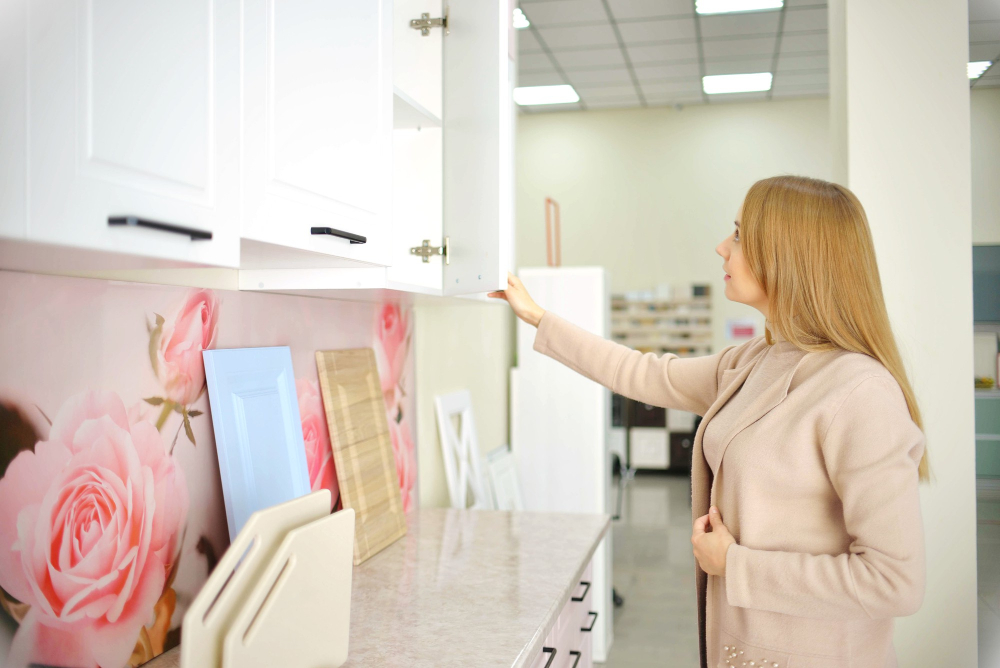
The style you choose should complement the overall aesthetic of your kitchen while also fitting within your budget. Some popular cabinet styles include shaker, flat-panel, raised-panel, and beadboard.
Each style has its unique features that can enhance the look of your kitchen.
In addition to choosing a style that suits you best, consider the material used in constructing cabinets as well. Solid wood is an excellent choice for durability and longevity but can be expensive compared to other materials like MDF or particleboard with veneer finishes.
Another factor worth considering is whether you want custom-made or pre-fabricated cabinets; custom-made cabinets offer more flexibility in terms of design but come at a higher cost than pre-fabricated ones.
Cost of Replacing Cabinets

The total cost depends on several factors such as the size of your kitchen, the type of materials you choose for your new cabinets (e.g., wood vs. Laminate), and whether you opt for custom-made or pre-fabricated units.
Custom-made cabinets are typically more expensive than pre-fabricated ones because they require skilled labor and specialized tools to create a perfect fit in your space. On the other hand, pre-fabricated options come in standard sizes and designs which can limit customization but save money.
Other costs associated with replacing kitchen cabinets include demolition fees if removing old cabinetry is required; installation fees charged by contractors; hardware costs like handles or knobs; delivery charges if ordering online instead of buying locally.
DIY Vs. Hiring Professionals

While DIY can save you money on labor costs, it’s important to consider your skill level and the time investment required for each option.
If you’re an experienced DIYer with ample free time, painting your cabinets could be a feasible option. However, keep in mind that cabinet painting requires attention to detail and patience.
You’ll need proper tools such as sandpaper, brushes/rollers/sprayers (depending on what method of application is chosen), primer/paint/stain/varnish (depending on what finish is desired), drop cloths/tape/plastic sheeting (to protect surrounding surfaces from paint splatters). If any mistakes are made during the process of applying paint or stain onto cabinetry surfaces then they will have negative effects like unevenness which would require additional work later down line.
On the other hand, if you lack experience in home improvement projects or simply don’t have enough time available for this type of undertaking – hiring professionals might be worth considering instead! Professional painters/carpenters will bring their own equipment and expertise into play while ensuring quality results within reasonable timelines without causing damage elsewhere around house due carelessness handling materials/tools used during job completion.
Environmental Considerations

While both options have their environmental impact, one has a greater effect than the other.
When it comes to painting cabinets, the type of paint and its application method can make a significant difference in terms of environmental impact. Traditional oil-based paints contain volatile organic compounds (VOCs), which are harmful to human health and contribute to air pollution.
However, many modern water-based paints are low-VOC or VOC-free and offer an eco-friendlier alternative.
On the other hand, replacing your kitchen cabinets involves removing them from your home entirely. This process generates waste that ends up in landfills unless properly recycled or repurposed.
New cabinet materials require energy for production and transportation.
Impact On Resale Value: Painted Vs. New Cabinets

Upgrading your kitchen cabinets can increase the overall value of your home and attract potential buyers. However, whether you choose to paint or replace your cabinets can affect how much return on investment (ROI) you’ll see.
According to a report by Remodeling Magazine’s Cost vs. Value, a minor kitchen remodel that includes cabinet refacing has an average ROI of 80%.
This means that if you spend $10,000 on updating your kitchen with new cabinets or refacing existing ones before selling your house, it could potentially add $8,000 in resale value.
However, keep in mind that this is just an average estimate and may vary depending on factors such as location and market trends. Additionally painting versus replacing will have different impacts: while new cabinetry might be more attractive for some buyers who are looking for modern finishes; painted cabinetry might appeal more towards those who prefer vintage aesthetics.
Longevity: Painted Vs. New Cabinets
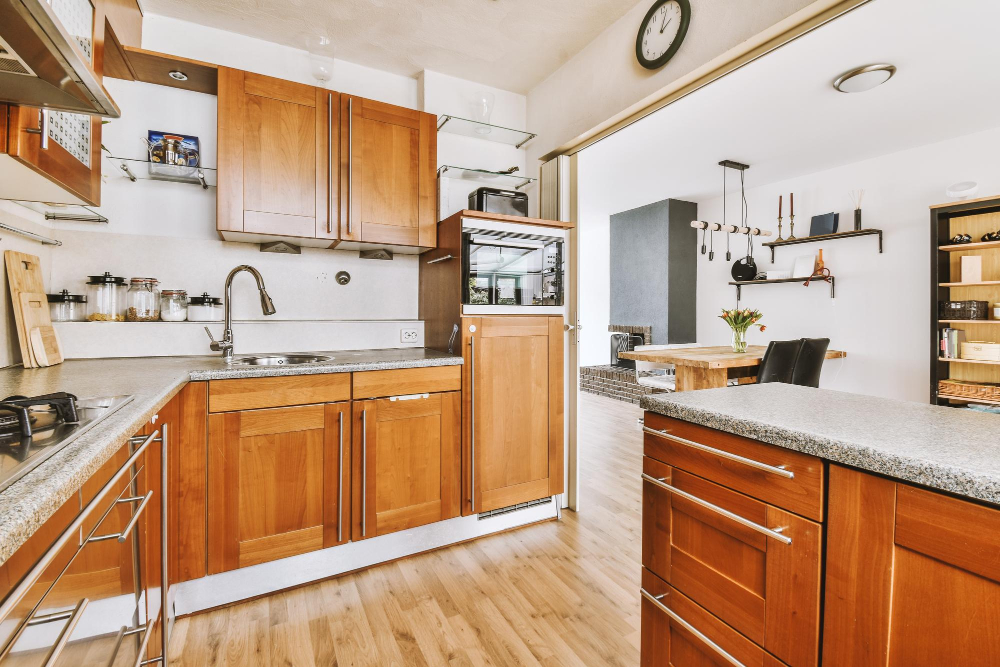
While new cabinets may last for decades, painted ones have a shorter lifespan and require more maintenance. Painted cabinets are prone to chipping, peeling, and fading over time due to exposure to heat, moisture, and daily wear-and-tear.
On the other hand, new cabinets made of high-quality materials such as hardwood or plywood can withstand years of use without showing signs of damage.
However, it’s worth noting that the longevity of painted vs. New kitchen cabinets largely depends on how well they’re maintained over time.
Proper cleaning techniques and regular upkeep can extend the life span of both options significantly.
If you opt for painting your existing cabinetry instead of replacing them with brand-new ones but want them looking fresh longer than usual; then refinishing might be an option worth considering since it involves sanding down old finishes before applying fresh coats which makes it less likely that chips will occur in future years compared with just painting alone.
Maintenance and Cleaning: Painted Vs. New Cabinets

Painted cabinets require regular cleaning with a soft cloth or sponge to avoid scratching the surface. Abrasive cleaners should be avoided as they can damage the paint finish.
On the other hand, new cabinets are typically easier to clean due to their smooth surfaces that don’t absorb dirt or grime like painted surfaces do. However, certain materials such as wood may require special care depending on how they were finished.
It’s important to note that while painted cabinets may need more frequent cleaning than new ones, touch-ups are relatively easy if any chips or scratches occur over time compared with replacing an entire cabinet unit.
Aesthetic Appeal: Comparing Outcomes
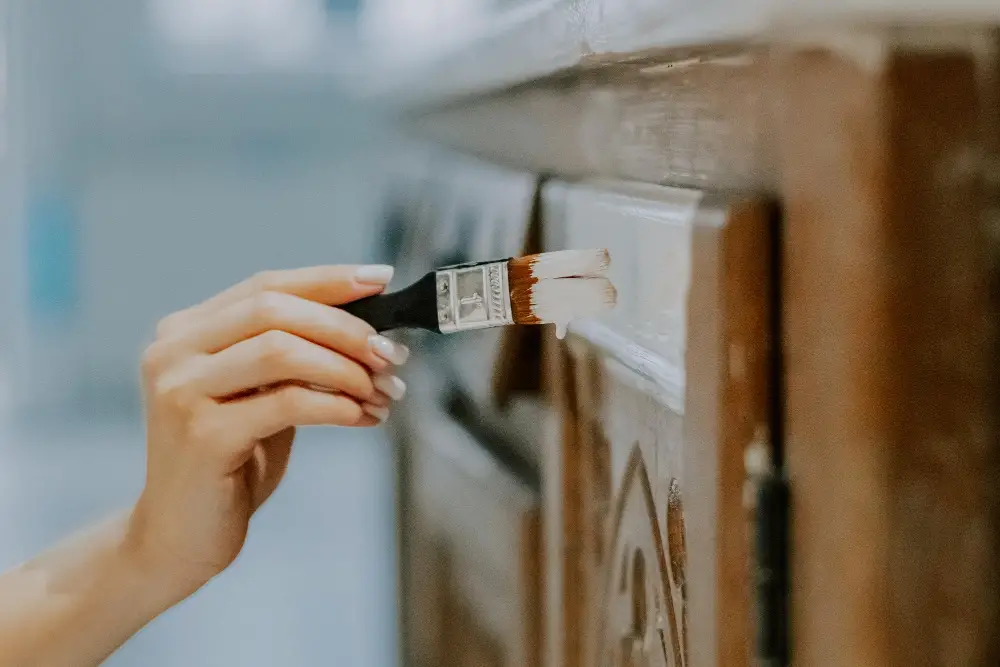
While both options can give your kitchen a fresh look, the outcomes are different. Painting cabinets can transform them into something new and modern, but it won’t change their basic structure or design.
On the other hand, replacing cabinets allows you to choose from various styles and materials that match your taste and preferences.
If you’re looking for an affordable way to update your kitchen’s aesthetic appeal without breaking the bank, painting may be the best option for you. It’s an excellent choice if you want a quick fix that doesn’t require significant changes in layout or design.
However, if budget isn’t much of an issue and you’re willing to invest more time in remodeling your space entirely – then replacing might be worth considering as it offers greater flexibility with regards to style choices while also providing long-term durability benefits over painted surfaces.
Refinishing Cabinets: An Alternative Option
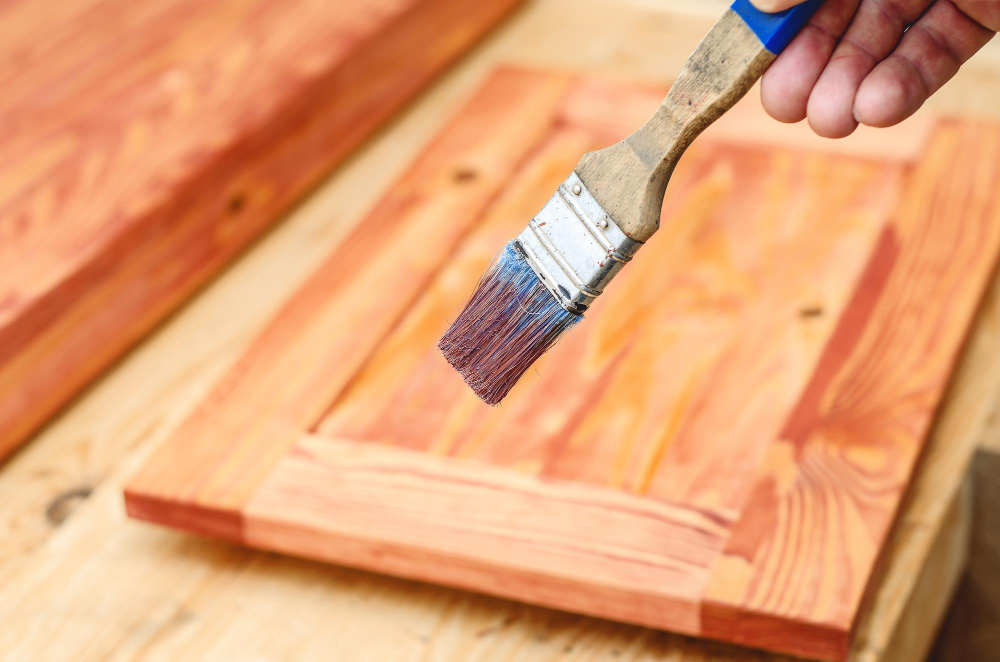
This process involves sanding down the existing finish and applying a new stain or varnish, giving your cabinets a fresh look without having to replace them entirely. Refinishing can be an excellent choice if you’re happy with the current style of your cabinetry but want an updated appearance.
One significant advantage of refinishing over painting is that it allows you to maintain the natural wood grain and texture, which can add warmth and character to your kitchen. Refinishing typically costs less than replacing cabinets altogether while still providing a noticeable improvement in appearance.
However, it’s essential first to assess whether refinishing is feasible for your particular set of cabinets. If they are damaged beyond repair or have undergone previous refinishes that have left them unevenly coated with layers upon layers of paint/varnish/stain – then replacement may be necessary.
Real-Life Examples and Testimonials
We’ve gathered some real-life examples and testimonials from homeowners who have either painted or replaced their kitchen cabinets.
One homeowner, Sarah, decided to paint her outdated oak cabinets a bright white color. She was thrilled with the results and saved thousands of dollars compared to replacing them entirely.
Another homeowner, Johnathan, opted for new custom-made cherry wood cabinets that matched his home’s aesthetic perfectly but came at a steep price.
While these are just two examples of many different outcomes when deciding between painting or replacing your kitchen cabinets; they highlight how personal preferences play into this decision-making process.
Ultimately whether you choose to paint or replace your kitchen cabinetry will depend on several factors such as budget constraints, time investment required for each option as well as skill level needed for DIY projects versus hiring professionals among other things.
FAQ
What is the cheapest way to redo kitchen cabinets?
The cheapest way to redo kitchen cabinets is to reface them by stripping the stain or paint and applying new stain, varnish, or paint, or by using a stick-on veneer.
Is it cheaper to paint kitchen cabinets or reface them?
Painting kitchen cabinets is generally cheaper than refacing them, but painted cabinets may require more maintenance due to build-up of grease and dust.
What is the downside to painting kitchen cabinets?
The downside to painting kitchen cabinets includes higher costs compared to staining, inability to hide damages effectively, and being not very DIY-friendly.
Is it worth painting old kitchen cabinets?
Yes, painting old kitchen cabinets is worth considering, as it provides a durable, long-lasting, and affordable option for a quick makeover compared to buying new cabinets.
How does the cost of painting kitchen cabinets compare to completely replacing them?
The cost of painting kitchen cabinets is generally more affordable than completely replacing them.
What factors should be considered when deciding between painting and replacing kitchen cabinets?
When deciding between painting and replacing kitchen cabinets, consider factors such as budget, the condition of the cabinets, the desired look, and the value of your time and effort.
Are there any cost-effective alternatives to paint and replacement for updating kitchen cabinets?
One cost-effective alternative to paint and replacement for updating kitchen cabinets is using peel-and-stick contact paper, which can create a fresh and modern look.
